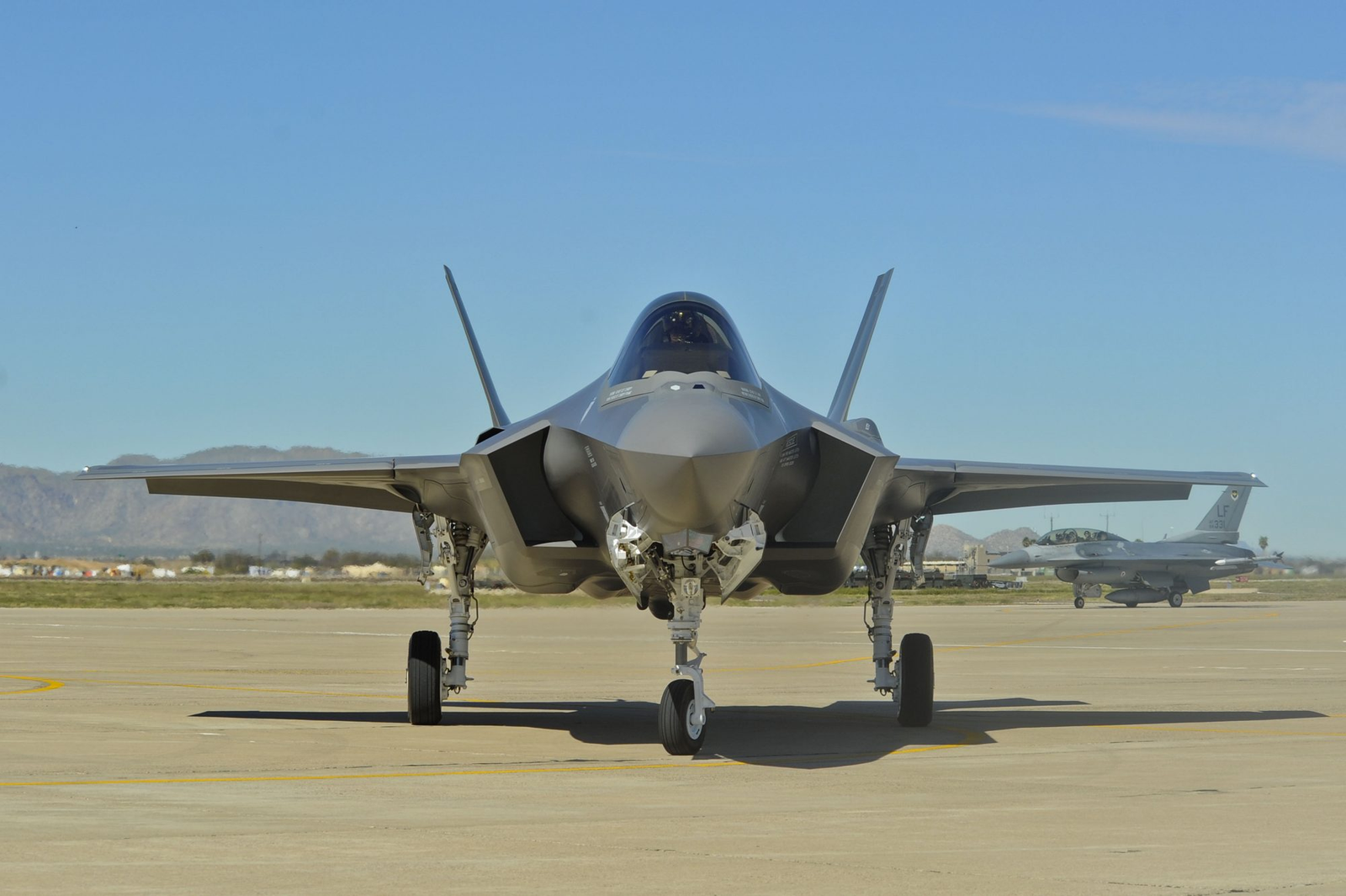
On Jan. 28, 2025, an F-35A Lightning II from the 355th Fighter Squadron, 354th Fighter Wing, went down at Eielson Air Force Base in Alaska—a harrowing experience that soon became a cautionary tale in high-tech warfare aviation. The crash, which was caught on camera, had the stealth fighter plummeting nearly vertically before bursting into flames, while the pilot safely parachuted down. The loss: $196.5 million.

The issue started just after takeoff. The pilot attempted to retract the nose landing gear, but it would not come all the way up. His wingman saw that the nose gear door was open, and when the gear came back out, the wheel was off by 17 degrees to the left—impossible to land safely.

Unbeknownst to the pilot, hydraulic fluid for the landing gear had been contaminated with water, which froze in the cold 1.4-degree Fahrenheit air. The ice accumulation prevented both nose and main landing gear struts from functioning correctly, triggering a domino effect of failures.

The F-35 landing gear is a technological wonder of the modern age, functioning through the exacting hydraulic pressure and sensor inputs. Every main strut possesses two “weight on wheels” (WoW) sensors, and the nose strut has one. They inform the flight computer whether the plane is airborne or on the ground—a distinction of paramount importance to the jet’s flight control laws. When ice caused the struts not to extend all the way out, the sensors inaccurately indicated the plane was on the ground while it flew around Eielson at 9,500 feet.

Confronted with a historic malfunction, the pilot called into a 50-minute airborne conference with the supervisor of flying and five Lockheed Martin engineers, including software, flight safety, and landing gear experts. They came up with a plan to try two “touch-and-go” moves in an effort to reposition the jammed nose wheel.

The initial attempt was unsuccessful, and the second made matters worse, as ice was now also involved with both main landing gear struts. Since all the WoW sensors indicated that the plane was “on the ground,” the flight computer of the F-35 transitioned to ground-mode automated flight, overriding the pilot and making the plane uncontrollable.

As per Pacific Air Forces, “The plane switched to ‘on-ground’ flight control law in flight and became uncontrollable. The pilot safely ejected, and emergency responders were on the scene within a minute.” The plane climbed to 3,205 feet before stalling and crashing, going over the pilot under his parachute as it descended.

Several factors were found in the investigation that contributed. The hydraulic fluid in the right main landing gear and nose contained approximately 30 percent water, well above acceptable levels. Storage barrels and servicing carts were well over contamination standards, and logs for maintenance were incomplete. The squadron had no full-time hazardous materials manager, and there were no correct procedures for storing fluid and servicing equipment. The pump on top of the hydraulic barrels had no thread sealer, risking water entry, and the barrels were not fixed.

The Air Force accident board determined, “Crew decision-making during the in-flight conference call, lack of proper oversight of dangerous materials, and inattention to hydraulic servicing procedures were significant contributing causes.” The report further indicated that Lockheed Martin had issued a caution in April 2024 that WoW sensor malfunctions in extreme cold would impact aircraft controllability, but this was not implemented at the time of the emergency.

The lessons apply far beyond Alaska. Flying sophisticated planes such as the F-35 in freezing weather comes with special challenges—ranging from hydraulic fluid maintenance to sensor performance and software interactions. The crash highlights the requirement for strict maintenance, comprehensive training, and sound procedures to avoid water contamination.

For F-35 pilots based in cold-weather countries like Canada and Finland, the Eielson accident is a bitter reminder that no matter how sophisticated the technology, it is only as good as the people and processes behind it.
